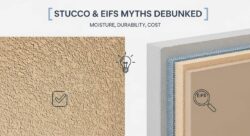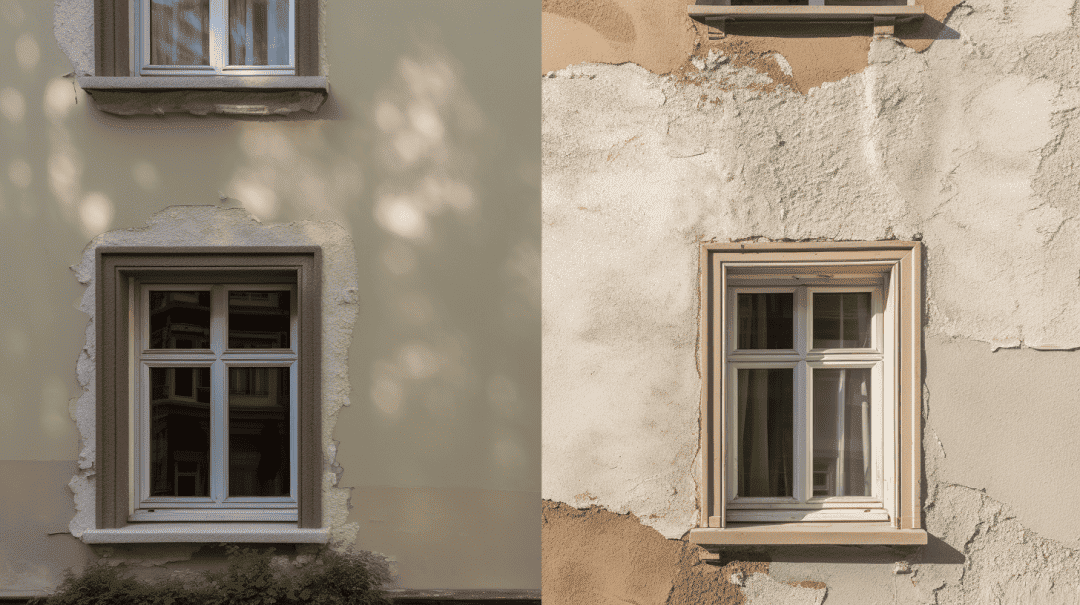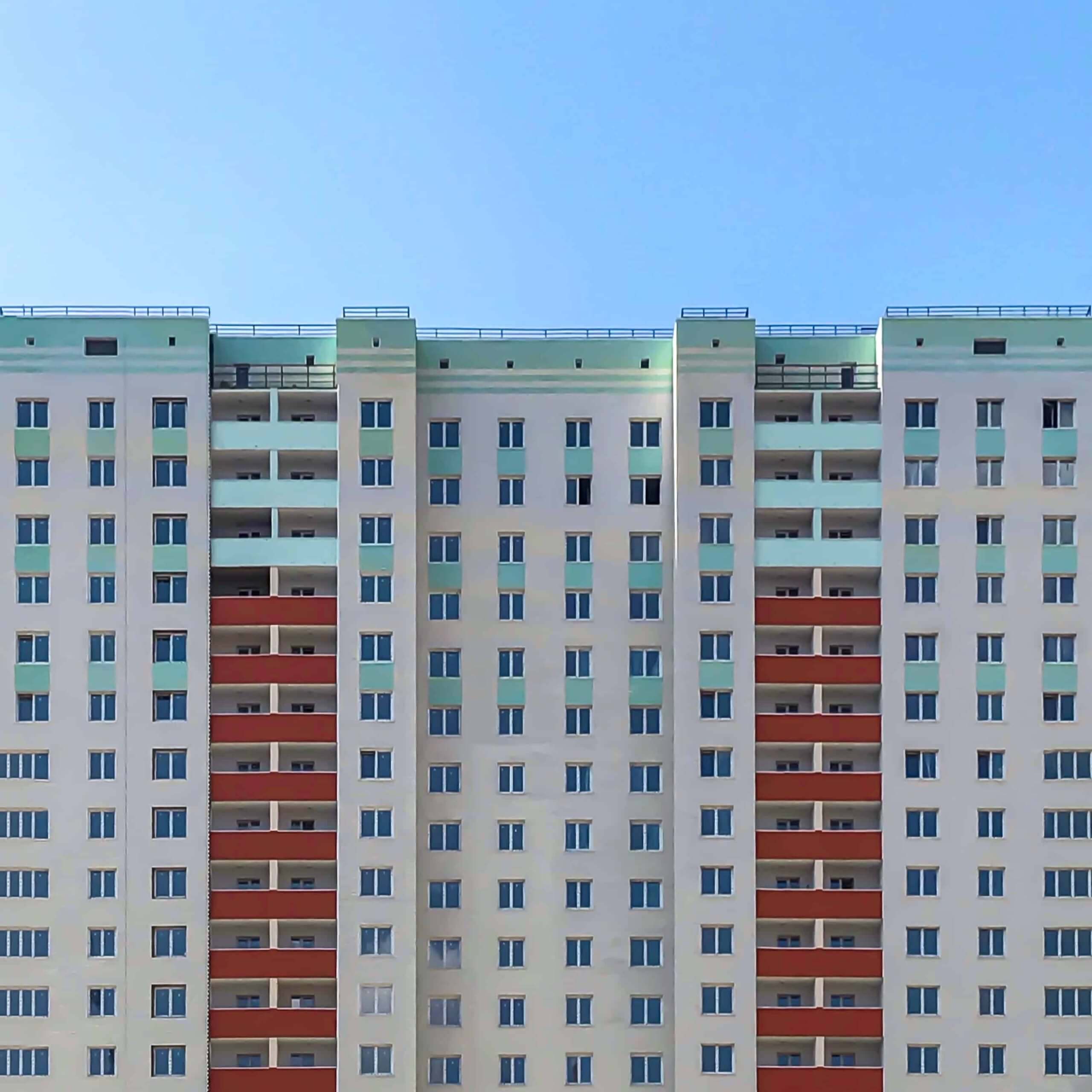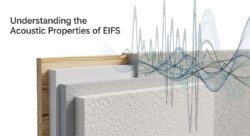Exploring the Pros and Cons of EIFS and DEFS: A Comprehensive Guide to Understanding Your Exterior Cladding Options
Many homeowners are seeking the best protective cladding for their properties, but often become confused between Exterior Insulation and Finish Systems (EIFS) and Direct Applied Exterior Finish System (DEFS).
Both systems offer remarkable weather resistance, insulation, and aesthetic appeal that hide your exterior walls’ potential issues. This blog post will guide you through an understanding of what these two systems entail, their similarities, differences, and installation techniques.
Get ready to take a step towards making an informed decision about protecting your property exteriors!
Key Takeaways
- EIFS and DEFS are both types of protective cladding used on properties. They offer weather resistance, insulation, and appeal.
- EIFS (Exterior Insulation and Finish Systems) is a layered system consisting of an insulated, water-resistant base with stucco-like coating on top; it’s durable and provides substantial thermal protection.
- On the other hand, DEFS (Direct Applied Exterior Finish System) involves application directly onto a substrate like sheathing or masonry. It lacks an insulation layer but offers similar aesthetic effects at a lower cost than EIFS.
- Proper installation for both systems is crucial to prevent durability issues such as moisture intrusion, which could lead to costly repairs down the line. Also important is where you live: consider your local climate when choosing between these two options.
What is Exterior Insulation and Finish Systems (EIFS)?
Exterior Insulation and Finish Systems (EIFS) is a type of building cladding, commonly referred to as synthetic stucco, which provides exterior walls with an insulated, water-resistant surface.
This system consists of several layers, including a drainage plane designed to channel excess water away from the building’s structure, base panels for insulation board attachment, and a layer known as a stucco base coat incorporating mesh embedded in cementitious material for increased durability and impact resistance.
The application process also includes detailing around windows and doors for perfect abutment and sealing against moisture intrusion. Finally, an acrylic-latex finish coat is applied over these layers, providing aesthetic appeal while ensuring heightened weather resistance.
Drainage Plane
The drainage plane plays a paramount role in the performance and durability of both EIFS and DEFS systems. This is set up as an impermeable layer that allows water to flow down and out, shielding the underlying structure from moisture buildup.
The installation involves establishing a separation between the WRB (Water-Resistant Barrier) and base panels, thus offering an extra line of defense against water invasion. To deliver greater resilience, liquid-applied waterproofing membranes are utilized for sealing panel joints within this system.
A robust drainage plane reduces risks associated with moisture penetration, hence averting potential failures while ensuring the longevity of your cladding system.
Base Panels
Base panels play a crucial role in the Exterior Insulation and Finish Systems (EIFS). Typically, materials such as PermaBase, James Hardie HardieBacker, or LP SmartSide are utilized to construct these panels.
They provide a strong and durable base over which insulation is installed.
Firstly, these panels are fixed over a drainage layer that could be Keene Building Products’ Driwall Rainscreen or Benjamin-Obdyke’s Home Slicker. Their primary function is to ensure efficient water management within the EIFS assembly.
Further adding to their functionality, control joints must also be integrated into the system by keeping the base panels 1/2 inch apart with an “M” profile vinyl strip sandwiched between them for potential wall expansion and contraction.
For additional protection from weather conditions, it’s critical that panel joints get sealed using liquid-applied waterproofing membranes like StoGuard or Dryvit Backstop NT for increased durability.
This ensures the robustness of the EIFS construction while maintaining its visually appealing exterior finish.
Also integral to any successful EIFS installation is effective flashing incorporation at the Water Resistive Barrier (WRB) layer of siding transitions and wall penetrations – including sidewall flashings through-wall flashings, etc., further fortifying against possible moisture intrusion issues.
Stucco Base Coat
The stucco base coat, a critical component of both EIFS and DEFS systems, plays a significant role in enhancing the integrity and longevity of exterior walls. Made from cementitious material, this layer ranges between 3/8 inch and 1/2 inch in thickness per application.
Before applying it over insulation boards or other surfaces like plywood or OSB sheathing, you should seal the joints using a liquid-applied waterproofing membrane such as StoGuard or Dryvit Backstop NT.
This thorough sealing process offers a durable barrier that enhances weather resistance while minimizing moisture intrusion risks – one of the common reasons behind cladding failures.
It’s essential to apply control joints roughly every 10 to 12 feet vertically and horizontally across the wall after laying down your stucco base coat; they help manage structural movement and minimize coating separation issues later on.
Reliable installation ensures cost-effective exterior renovations, upholding siding damage with security against litigation for construction defects— So builders always observe building code requirements meticulously to achieve top-tier results.
Detailing Windows and Doors
In stucco applications, windows and doors require meticulous detail for optimal performance. The process involves a strategic layer sequence starting with the insulating Water-Resistant Barrier (WRB).
After curing, foam trim gets added to this base coat. Notably, this foam trim has a small clearance of 3/8 inch away from door or window edges. This gap allows room to create an effective sealant channel.
Importantly, the foam used is backwrapped at the edge; this design ensures even coating while reducing water ingress changes radically. Following these steps optimizes your EIFS investment by incorporating critical sealing elements around windows and doors that help avoid moisture damage in the future.
Finish Coat
The final layer in the Exterior Insulation and Finish Systems (EIFS) application is the finish coat. Consistency matters as it should be applied at a thickness of about 3/8 inch to 1/2 inch per coat, creating a resilient barrier against external elements.
The finishing touch not only helps achieve weather resistance but also imparts an aesthetically appealing texture to your building cladding. Flashing and sealing become crucial steps during its application, as their absence often causes moisture intrusion that can lead to costly repairs or possible legal disputes.
To avoid such outcomes, durable materials like StoGuard or Dryvit Backstop NT can be used for sealing panel joints effectively, ensuring long-lasting protection of your walls from outside elements.
What is Direct Applied Exterior Finish System (DEFS)?
Direct Applied Exterior Finish System (DEFS) is a type of exterior cladding that involves the direct application of finish materials onto a water-resistant substrate, typically over sheathing or masonry bases.
It includes processes like adding liquid-applied WRB to provide an extra layer of protection against moisture intrusion and integrating flashings at various points, such as sidewalls and roof-to-wall intersections.
This system does not incorporate insulation in its assembly, unlike EIFS, but is appreciated for being cost-effective while offering similar aesthetic appeal.
Over Sheathing Only
The Direct Applied Exterior Finish System (DEFS) often uses a technique known as Over Sheathing Only (OSO). During this process, exterior cladding materials are deployed over the sheathing on your building.
This practice has risen in popularity despite increased instances of failure, primarily when moisture seeps through incomplete sealing jobs, leading to damage and rotting. To prevent these failures, appropriate flashing integration at the water-resistant barrier layers is essential while implementing OSO for lasting performance.
Liquid-Applied WRB
Liquid-Applied WRB (Weather-Resistant Barrier) efficiently acts as a preventative layer in construction, providing agile protection against water intrusion. This sealing procedure is crucial during the Direct Applied Exterior Finish System (DEFS) process, actively covering and guarding panel joints.
Techniques of application recommend integrating flashings at the WRB layer, which in turn, firmly seals sidewalls, chimneys, and through-wall transitions. Post effective installation around apertures such as windows and doors creates an enduring barrier resisting harsh weather conditions while enhancing wall longevity.
A critical measure to ensure continuous external and internal wall safety lies in employing control joints every 10-12 feet vertically and horizontally, thereby averting potential stucco base coat separations.
For optimum results, a Keene Building Products’ Driwall Rainscreen or other equivalent drainage layers can be utilized to set up a buffer between the WRB membrane and base panels for added robustness in all climates.
Integrating Flashings
In DEFS, one crucial step is subjecting the exterior finish to nailing or screwing in precise positions. These openings can ideally create an entry point for water, which may damage interior components.
Thus, it becomes vital to use quality flashings at this stage. Flashings prevent water intrusion that could lead to expensive construction defects, lawsuits, and even repairs like wet insulation and siding damage, as observed from past incidents costing up to $85,000 in damages.
Key areas requiring these protective measures include windows, doors, or anywhere else a hole has been drilled into the wall material for attachment purposes, such as sidewall flashings and chimney flashings.
The Differences Between EIFS and DEFS
EIFS and DEFS, outwardly similar, vary significantly in construction process, material composition, and installation techniques. EIFS employs a multi-layered approach, including an insulation board secured to the substrate, a base coat with fiberglass embedded for strength applied atop the insulation mesh-encased layer, followed by a finish or topcoat, while DEFS directly employs its system on the wall sheathing itself without any intermediate foam layers.
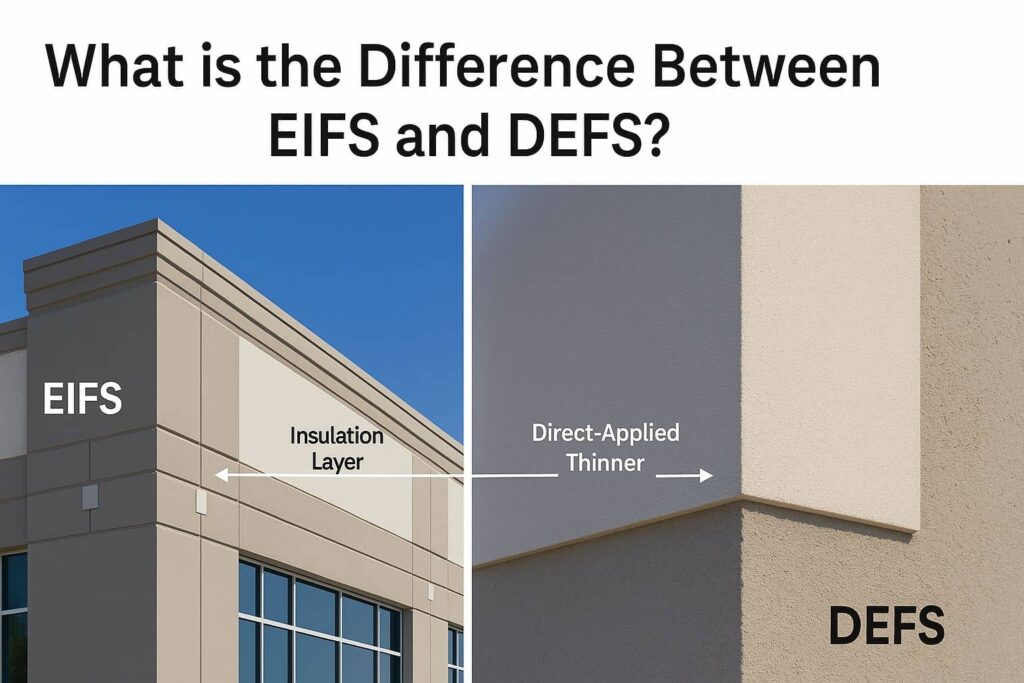
Both systems provide good insulating properties, but their methods of achieving this vary greatly, hence impacting durability and maintenance as well; EIFS uses synthetic materials that offer flexibility with impact resistance, whereas DEFS utilizes cementitious material, contributing to a more robust nature but less adaptability.
The factors determining the choice between EIFS or DEFS could be based on budget considerations, since EIFS tends to be a costlier, albeit smoother finished product, against relatively affordable yet visibly coarser rendering via stucco application inherent in DEFS. Climate conditions also influence selection, favoring either a water-resistant barrier type of EIFS in humid climates over a drain.
Construction Process
The construction process for both EIFS and DEFS involves a sequence of steps that should be followed meticulously. Contractors initiate the process by installing insulation board directly onto the exterior sheathing or masonry wall, creating an energy-efficient thermal envelope around the building.
This base is coated with water-resistant barrier (WRB) materials to reduce moisture penetration. For stucco systems like EIFS, specially designed fiberglass mesh gets embedded in a stucco base coat over this substrate to boost impact resistance and durability.
Utilization of proper flashing at roof-to-wall intersections protects against costly repairs due to leaks. The final outer layer consists of finish coats applied in several layers, which provide curb appeal while shielding against weather elements.
Material Composition
Exterior Insulation and Finish Systems (EIFS) consist of materials like insulating foam boards, mesh reinforcement, and weather-resistant finish coats. These systems primarily use synthetic components to create a protective layer over the exterior walls.
On the other hand, the Direct Applied Exterior Finish System (DEFS) makes use of traditional stucco made from cementitious material along with integrated flashings for added protection against moisture intrusion.
Additionally, DEFS often incorporate liquid-applied waterproofing membranes while EIFS rely on their multi-layered composition to resist outside elements, showcasing two different approaches in material use for cladding assemblies.
Installation Techniques
Installing EIFS and DEFS requires a high degree of precision to ensure water resistance and longevity. For both systems, proper flashing placement is crucial. This includes kickout flashings at roof-to-wall intersections, which help direct water away from the wall surface, reducing the potential for moisture intrusion that often leads to costly repair or legal liabilities.
The sealant must be meticulously applied around doors, windows, and other gaps in the cladding, providing an impregnable barrier against water penetration. Similarly, the installation of base panels should follow the manufacturer’s instructions and evaluation reports closely to minimize the likelihood of failures down the line.
For EIFS specifically, insulation boards need a secure attachment to the substrate before applying synthetic stucco, which covers a fiberglass mesh layer—this helps with impact resistance while enhancing energy efficiency as well.
On the other hand, when working with DEFS on sheathing-only assemblies, after the application of liquid-applied WRB (water-resistive barrier), an integrated drainage space promotes proper drying, thereby minimizing the risk associated with trapped moisture behind the cladding system.
Long story short: Properly conducted installations according to specific guidelines help maximize benefits reaped from these exterior finish systems while relegating problems typically found in poorly done assemblies into obscurity.
The Importance of Proper Installation for Both Systems
Impeccable installation of both EIFS and DEFS is crucial not only for enhancing aesthetics but also for avoiding system failures, ensuring longevity, optimizing energy efficiency, and meeting building code requirements.
Read on to understand precise techniques that guarantee maximum benefits from these systems.
Avoiding Failures
Investing in a water-resistant, insulating, and finish coat system for your building can deliver a host of benefits. However, it’s crucial to mind potential pitfalls to ensure the longevity and effectiveness of the EIFS or DEFS installations. Here are some ways to sidestep common failures:
- Use liquid-applied waterproofing membranes: Brands such as StoGuard and Dryvit Backstop NT offer robust protection against moisture intrusion.
- Install appropriate flashings: Especially at risk-prone intersections like roof-to-wall or chimney areas; missing kickout flashings can lead to serious repair expenses.
- Conduct thorough sealing around wire penetrations: A simple oversight here could cost tens of thousands of dollars – there has been an instance where a builder was slapped with an $85,000 lawsuit because of this detail.
- Follow manufacturer’s instructions closely: Comply with all technical guidelines for EIFS or DEFS installation provided by product manufacturers to prevent conflict with building codes and escape legal liabilities.
- Rely on expert help when needed: Don’t hesitate to invest in professional advice and action, especially considering the increasing rate of failures observed with cladding materials like EIFS and DEFS recently.
Ensuring the Longevity of the Wall
Correct maintenance and inspection play vital roles in preserving the integrity of your wall. A sturdy installation isn’t enough; regular checks for any cracks or moisture buildup are imperative.
Take note that moisture intrusion usually results from cladding failures, causing significant damage to framed walls. Hence, using recommended liquid-applied waterproofing membranes like StoGuard or Dryvit Backstop NT reduces this risk by effectively sealing panel joints and creating a robust barrier.
Keep track of control joints as well—they need to be placed every 10 to 12 feet vertically and horizontally. This strategic placement helps prevent uncontrolled cracking while boosting the overall longevity of your wall structures, too.
Following these preventive measures not only guarantees optimal wall conditions but also saves you from potentially hefty repair costs in the future.
Conclusion
Understanding the difference between EIFS and DEFS is crucial for making an informed decision regarding your property’s exterior finish. This knowledge allows you to appreciate their unique construction processes, material composition, and installation techniques.
Furthermore, it emphasizes the significance of correct application in ensuring the structural integrity and lifespan of your building envelope.
FAQs
What are the basic differences between EIFS and DEFS?
EIFS, or exterior insulation finish systems, feature an insulation board affixed to a substrate with water-resistant barriers. DEFS, or direct applied exterior finish systems are different as they apply directly to masonry or cementitious materials without foam insulation.
How does water-resistance work in both EIFS and DEFS?
Both types of synthetic stucco facilitate drainage differently: EIFS uses a specific type known as “water-managed” that relies on a drainage plane behind the cladding assembly for any intrusion. Direct-applied solutions typically rely directly on their waterproof finishes.
Can either system be used over existing wall systems, such as siding or plywood?
Yes! Both claddings can be installed onto preexisting walls; however, it’s crucial to follow the manufacturer’s installation instructions strictly for optimal performance and compliance with building codes.
What maintenance is required with EIFS and DEFS?
After correctly installing base coat stucco systems like these with mesh embedded in them, forensic inspections should regularly ensure no significant structural damages occur due to weather factors affecting their impact resistance capacity.
How can one choose between using EIFS and DEFS?
Choosing depends upon various factors ,including desired levels of insulation efficiency (higher in EIFs), local building regulations, cost-effectiveness per square foot (EIFS could discount higher) & historical context (depending on when your property was constructed).
Contact us or Call (765) 341-6020 for a Free EIFS Estimate

